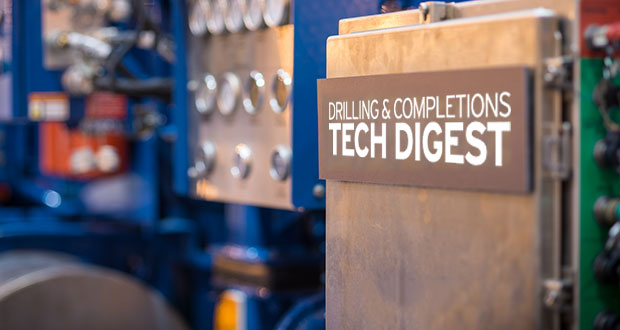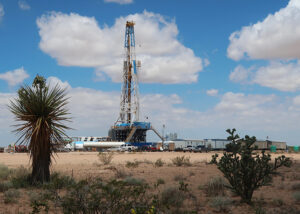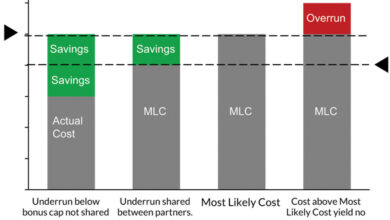Drilling & Completion Tech Digest


Surge Energy uses Latshaw Rig 10 to drill 18,325-ft lateral in Permian in 12.5 days
Four years ago, Surge Energy worked with Latshaw Drilling and Pro Directional to drill what it said was the longest known lateral in the Permian Basin at the time, at 17,935 ft. Now, the companies have exceeded that lateral distance in another Permian well. In Q4 2023, the companies drilled the Succubus-Rougarou 24-37 7AH well in the Wolfcamp A play in Borden County, Texas, with a total horizontal displacement of 18,325 ft.
The well, which was drilled by Latshaw Drilling’s Rig 10, was executed in 12.5 days from surface to its total measured depth of 24,879 ft. This marked a six-day reduction in drilling time from the 2019 well, where the total measured depth of 24,592 ft was reached in 18 days.
This drop in time was primarily enabled by the elimination of a planned trip, said Jeremy Christopherson, Drilling Manager at Surge Energy. The 2019 well featured a planned trip at 15,000-ft vertical section because the operator was unsure if the bottomhole assembly (BHA) could last beyond that distance. The 18,325-ft lateral in the 2023 well was drilled in one conventional directional BHA run – this marked a company record for Pro Directional for the longest lateral drilled in a single run with motor and MWD.
“These rigs can only rack back so much pipe in the derrick, and with the well in 2019, we felt that a 15,000-ft run in the lateral was probably all the motor could take, and we should trip and have a planned trip to change out the bit and the motor,” Mr Christopherson said. “We ended up tripping back in, and it takes a long time to round-trip from that depth. With the well we just drilled, we just decided to keep drilling with the BHA.”
Drilling of the most recent well utilized conventional mud motor and measurement-while-drilling (MWD) technology, and it was drilled 100% in zone. Surge Energy also reported no lost time due to downhole dysfunctions.
Surge Energy holds more than 100,000 net acres in the Midland Basin, with its core acreage located in Borden and Howard counties. The acreage presents major drilling challenges because the reservoirs are located in shallow depths, Mr Christopherson said. The total vertical depths (TVD) for wells drilled in the company’s Midland acreage since entering the region in 2016 have ranged between 5,500 and 8,100 ft. The 2023 well had a total vertical depth 6,794 ft.
“When we started drilling out there, we were drilling a lot of 1.5-mile, 2-mile laterals, and we slowly stepped out to drill longer and longer laterals. But it’s an area with very shallow TVDs. One of the things that makes these longer laterals more challenging is that, when you’re looking at around 6,000 ft of total vertical depth, we might not have enough weight to push 18,000 ft of pipe to TD the well,” Mr Christopherson said. To address this, the operator used standard friction reduction tools and rocked the drill pipe clockwise and counterclockwise to get weight on bit during sliding operations to work slack-off weight down to the bit.
The operator is currently running three rigs in its Midland Basin acreage – in addition to Latshaw Rig 10, it’s also operating Latshaw Rigs 18 and 20 in Howard County.
“I find Latshaw very easy to work with,” he said. “They have a rig type that’s very suitable for our style of drilling, particularly being able to go back on existing pads. The rigs move quickly, and the company has really good hands. They’re the old-school farm boys who can fix everything with a wrench. You don’t have to get a computer tech to fix a lot of stuff, and that works really well for us.”
The well is expected to be completed and brought online in the first half of 2024. DC

Hunt Oil and Odfjell Technologies set European depth record for 20-in. casing while drilling in Romania
Odfjell Technology recently worked with Hunt Oil to reach a European depth record for 20-in. casing while drilling (CWD) in its Macoveiu 3900 well, located in Bazau, Romania.
CWD was selected as the solution to mitigate possible surface hole hazards like shallow gas, formations sensitive to swabbing, tight hole and loss of circulation, as well as to achieve time savings for the surface section.
A cap was set on the maximum achievable working flow rate due to rig surface equipment limitations. This flow rate ceiling was lower than what was required for optimal operational performance, so this scenario required additional analysis of the drill bit performance, wellbore hydraulics and hole cleaning. The existing 20-in. casing by 24-in. bit design was analyzed, optimized and validated for the expected conditions.
A CWD record-breaking depth of 798 m below rotary was recorded.
By implementing Odfjell Technology’s CWD services, Hunt Oil reduced the number of runs required with significant saving on time and cost thanks to the elimination of conventional bottomhole assembly handling and tripping times. The operator was also able to achieve its drilling objectives on this 24-in. section by using Odfjell’s casing running tool, torque turn computers, manual handling tools and hydraulic power tongs with high-torque capacity and power packs. There were also no recordable incidents or accidents recorded during the operation.
SLB, Nabors to scale adoption of drilling automation
SLB and Nabors Industries are embarking on a collaboration to enable customers to integrate the companies’ drilling automation applications and rig operating systems. Customers will have access to a broader suite of drilling automation technologies and greater flexibility to utilize existing rig control systems and equipment on either SLB’s PRECISE or Nabors’ SmartROS rig operating system.
“Our collaboration with Nabors will provide E&P customers and drilling contractors across the globe with greater access to high-performance drilling capabilities, including Neuro autonomous directional drilling,” said Jesus Lamas, President, Well Construction, SLB.
Integrated cementing solution saves 18 hours on subsea well in US GOM
Expro recently completed a well cement placement project for a large international operator in the US Gulf of Mexico (GOM). Inner-string cementing was delivered for a subsea well’s 22-in. surface casing in a water depth of approximately 2,000 m in the Mississippi Canyon area. That was integrated with Expro’s Cure technologies to allow the operator to overcome ongoing offset well challenges. These included prolonged wait on cement (WOC) periods when transitioning directly from the jet string to the 22-in. surface casing, and tasks associated with drilling out a 22-in. shoetrack.
The integrated cementing solution helped save approximately 18 hours of cement-related drill-out, clean-out and WOC time compared with offset wells. The Cure technologies also removed the requirement for a shoetrack to be left in the casing string, preventing cement sheath-related challenges.
Transocean Norge semi earns DNV notation for greenhouse gas abatement
Late last year, the Transocean Norge became the first semisubmersible to receive DNV’s Abate (Power+) notation, following upgrades designed to lower the rig’s greenhouse emissions during operation. The notation is designed to reflect the best industry practices in greenhouse gas abatement for offshore units and represents a comprehensive energy and emission management system aligned with ISO 50001 standards. It emphasizes rigorous monitoring of energy consumption and the implementation of operational and technical strategies to reduce emissions.
Transocean implemented several key strategies to ensure the rig meets these standards: comprehensive monitoring of energy consumption, optimization of operational energy, use of closed bus ties to minimize the number of idle engines, and variable frequency drives in rotating machinery to optimally control the power for large rotating machinery.



